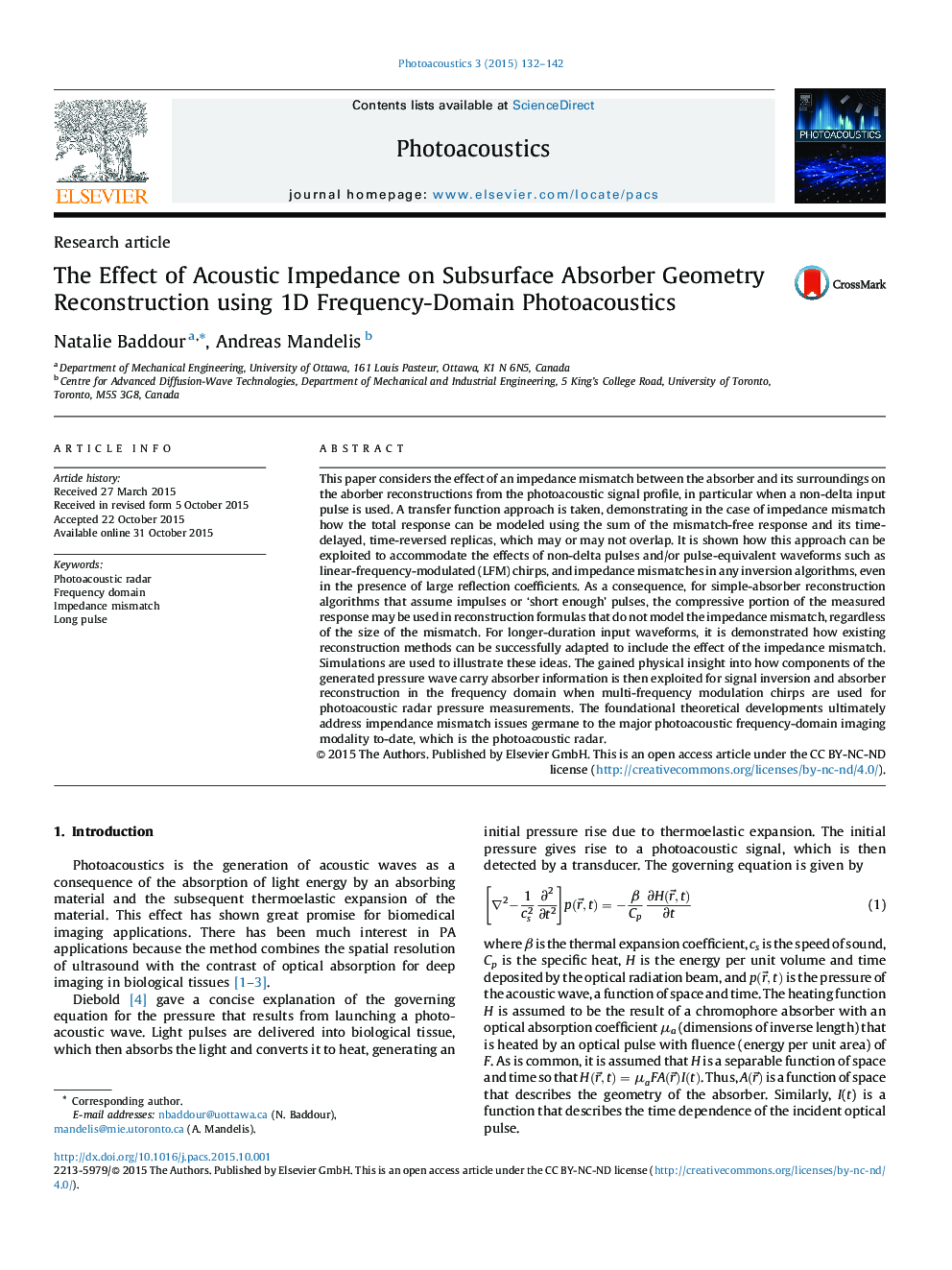| Article ID | Journal | Published Year | Pages | File Type |
|---|---|---|---|---|
| 561018 | Photoacoustics | 2015 | 11 Pages |
This paper considers the effect of an impedance mismatch between the absorber and its surroundings on the aborber reconstructions from the photoacoustic signal profile, in particular when a non-delta input pulse is used. A transfer function approach is taken, demonstrating in the case of impedance mismatch how the total response can be modeled using the sum of the mismatch-free response and its time-delayed, time-reversed replicas, which may or may not overlap. It is shown how this approach can be exploited to accommodate the effects of non-delta pulses and/or pulse-equivalent waveforms such as linear-frequency-modulated (LFM) chirps, and impedance mismatches in any inversion algorithms, even in the presence of large reflection coefficients. As a consequence, for simple-absorber reconstruction algorithms that assume impulses or ‘short enough’ pulses, the compressive portion of the measured response may be used in reconstruction formulas that do not model the impedance mismatch, regardless of the size of the mismatch. For longer-duration input waveforms, it is demonstrated how existing reconstruction methods can be successfully adapted to include the effect of the impedance mismatch. Simulations are used to illustrate these ideas. The gained physical insight into how components of the generated pressure wave carry absorber information is then exploited for signal inversion and absorber reconstruction in the frequency domain when multi-frequency modulation chirps are used for photoacoustic radar pressure measurements. The foundational theoretical developments ultimately address impendance mismatch issues germane to the major photoacoustic frequency-domain imaging modality to-date, which is the photoacoustic radar.
